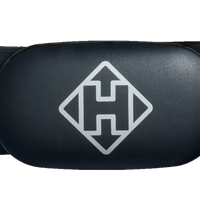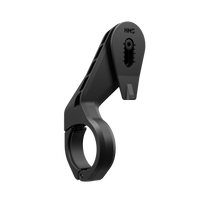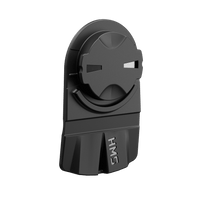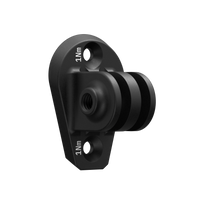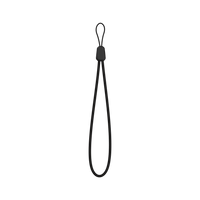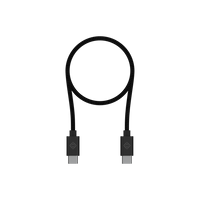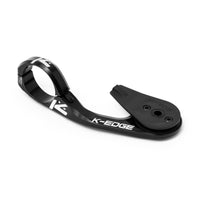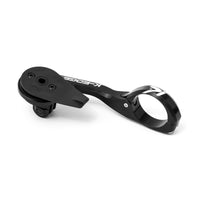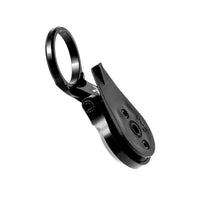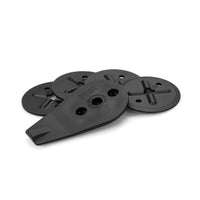Steve Taylor has cycled thousands of miles, including crossing Australia, to raise money for research into a cure for neuroblastoma. Here’s how Karoo leveled-up his fundraising.
Guest post by Steve Taylor, LifeCycleForNeuroblastoma.
. . .
This journey started back in 2013 when I turned sixty and bought a folding bike and set a goal to ride the first seven miles of my commute every day. The whole journey, which I’d driven for the previous 20 years, was around 18 miles with 1,000 feet of climbing each way.

When the summer came around (which doesn’t last very long in Scotland) I decided to ride the whole way. I wondered if these miles could benefit more than just me — would people be prepared to sponsor me at a penny a mile for charity?
There was really only one way to find out, so on August 13th 2013, LifeCycleForNeuroblastoma was born.
LifeCycleForNeuroblastoma
Neuroblastoma is a cancer of the nervous system in small children. The most common age of diagnosis is two years, and typically 50% of children who are diagnosed die before treatment is complete.

I knew three children who were relapsed and fighting the disease the second time around. As a data scientist in my day job, and medical science still striving to understand the disease in order to create a bespoke cure, this cause seemed like a good fit.
Because of the time of day that I was cycling (5am and 5pm), I was seeing no daylight for five months of the year, and riding on unlit roads across the Fenwick Muir, home to one of the largest onshore windfarms in Europe. Yet, I only missed one day that first winter, and that was due to a vicious storm.
By the end of 2014, I’d upgraded from folding bike to mountain bike, and then again to a Dawes tourer laden with supplies. I’d also upgraded from using Strava on my phone, which would lose signal or freeze, meaning recording the distance each day was very much hit and miss. I’d bought a Garmin, but while it represented an improvement, it still wasn’t meeting my needs.
I lost the first three months of 2015 recovering from a hernia from pedaling my heavy tourer up the hills. As soon as I was able to ride again, I got myself a lightweight road bike. By the end of 2015, the total miles had broken 21,000 and the climbing had also moved on to just under a million feet.
Eat, Cycle, Repeat
I’d originally set my stall out to ride 25,000 miles in support of Solving Kids Cancer (who in turn fund clinical research into neuroblastoma) on the basis that it was further than the circumference of the earth at the equator (24,902).

But alas, the day before my 63rd birthday, and with 2,000 miles left until my target, I was made redundant from my job in Glasgow. The daily 36-mile commute over the Fenwick Muir came to an abrupt end.
I was out of work for just six hours, immediately headhunted by a company in England to write medical software. My new role enabled me to work from home, so I was now free to choose my own routes and their timing to suit my working pattern.

I crashed through the 25,000 mile barrier in July 2016, almost two years ahead of schedule. I carried on. The lifestyle was perfect: you see T-shirts that proclaim “Eat, Cycle, Repeat.” I was actually living that dream.
By now I’d acquired a small but dedicated band of followers in Australia. One of those supporters was a radio DJ and he was plugging my ride on his show. I cannot overstate the motivation you get from hearing strangers all over the world promoting your cause.
Australia
In July 2017, Neuroblastoma Australia invited me to do a ride for them in Australia. They asked me if I could do a ride branded with the number 2, the most common age of diagnosis. The concept of Ride2Cure was born.
Enter the Karoo…
My old Garmin wasn’t up to the job for a number of reasons, with limited battery life and the lack of quality route planning being its key drawbacks. If I was going to take on something significant for Neuroblastoma Australia, then I needed a serious upgrade in navigational hardware.

Early reviews for the Hammerhead Karoo said it was a product that would do everything that I was asking for in terms of route planning and on the road navigation. I was sold on the concept, so in late 2017 I pre-ordered and eagerly awaited its arrival.
We came up with the idea of riding through the outback from Brisbane to Adelaide. By a stroke of good fortune and careful route planning on the Karoo Dashboard, we got the distance sorted at exactly 2222km.
When my Karoo arrived, I was gobsmacked to discover that it could create a route from the children’s hospital in Brisbane to the designated finishing point in Adelaide in about ten seconds, all on the device itself. Once we had that on the Dashboard, it was simply a case of chopping the route up into manageable stages and arranging the accommodation.

The Ride2Cure was 1380 miles. I finished it in 15 days. I hadn’t ridden 100 miles in a day in over 20 years, then I did it six times in ten days. And my legs just got stronger the longer the adventure went on.
I was 65 when I rode Ride2Cure solo, powered by Karoo navigation. I was seriously impressed with the Karoo on that trip, and every day I became more convinced that I couldn’t have met my goals without it. From navigating my way through small towns where a change of highway was required, to following detailed instructions in the big city, the Karoo had it all.

I finished up LifeCycleForNeuroblastoma at 44,444 miles on arrival in Australia, and declared Ride2Cure to be my fundraising swansong. Together, the two journeys had raised nearly £20,000 for research into neuroblastoma in the UK and Australia combined.
When I got home, tired but happy, I set aside a month and wrote a book about the whole five years. That work “Ride2Cure Neuroblastoma — From A Bus Pass To The Outback” is available for download from the Amazon bookstore and all royalties go to Neuroblastoma Australia.
Back on the Road
That was meant to be it in terms of long-distance cycling. I went back to Australia, this time as a tourist, revisiting some of the small communities I’d come across on the whistlestop tour some months earlier.

When I arrived in Adelaide, I met for brunch with Anna Meares. Anna had been aware of LCFN from the early days and we share a passion for supporting children with life-threatening diseases. It was Anna who suggested that I was probably denying myself the pleasure of what I do best.
On 1st July 2019, I went back out on two wheels. I set my stall out to replicate the original 25,000 miles all over again, except this time I had a professional setup: I was all tooled up with my Karoo mounted on a Trek cyclocross frame configured with a Rohloff Speedhub for some hardcore road miles.

At the end of December, six months in, I’ve added over 6,000 miles — a thousand miles a month average. The most satisfying aspect is that winter has not slowed my progress: I’ve completed nearly 200 consecutive stages at an average of 33 miles a day, all navigated with the Karoo.
It’s when a ride is on the periphery of my range that the Karoo really comes into its own: when I flip it into map mode and go exploring new routes that link into ones that I already know. Or occasionally throwing the bike in the back of the car and taking off for somewhere completely unknown. With offline maps, navigation and route planning are as easy as A, B, C.
. . .
The Ride2Cure Neuroblastoma trilogy now stretches to 52,000 miles and 2.5 million feet of climbing in six years. It has raised over £20,000 for research into the disease — clinical research in the UK and laboratory research in Australia.
You can follow the ongoing journey in the “Ride2Cure Neuroblastoma” Facebook group, and at the Ride2CureNeuroblastoma website. You can also donate through JustGiving.

